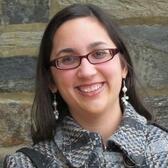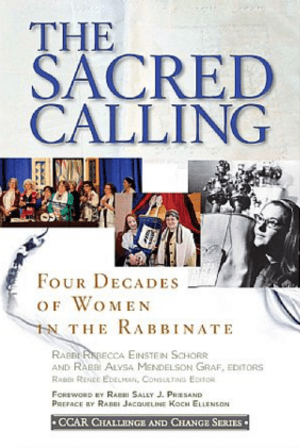The Sacred Calling: Reimagining Role Models
My rabbinical association recently asked me to join their mentoring program. This request felt surreal to me. Eight years after ordination is practically nothing in terms of rabbinical experience, and, at 34, I’m still younger than some new ordinees. For much of my career, I’ve been told that I couldn’t possibly have enough “life experience” to be a rabbi myself. What could I possibly teach a colleague?
Still, I said yes. Not because I felt I had enough experience, but because, when I was starting my career, it was difficult for me to find someone like me to talk to.
When I was ordained, I was 26, female, and unmarried. None of these things by itself are uncommon in the Reform rabbinate, but I rarely encountered rabbis that were in the exact same boat. Who could I turn to as I sought out a career path that worked for me, when certain choices were presented as ideal? With whom could I share my fight for paid family leave, and the awkwardness of doing so when one does not yet have a family? Who would listen to my dilemmas about how to present myself—both visually and verbally—without dismissing them as superficial?
The Women’s Rabbinic Network ended up being my salvation. It wasn’t that everyone in the WRN shared my specific struggles, it was that every woman in the organization had struggled to carve out her own path, no matter how “traditional” or “alternative” her situation. Many of us were the first woman in our position, or the only woman rabbi in our community. Through conference calls, regional gatherings, and conventions, the WRN provides a space to discuss creating boundaries, defying stereotypes, and advocating for our rights. Hearing the voices of other women rabbis makes me feel less alone in what can be a very lonely profession.
Now many of these voices have been distilled into a beautiful anthology, The Sacred Calling: Four Decades of Women in the Rabbinate. This volume, edited by my colleagues Rabbis Rebecca Einstein Schorr and Alysa Mendelson Graf, details not only the history of women in the rabbinate and their impact on Jewish life, but also the countless challenges we still encounter, even after 44 years. We still hear that we don’t look like rabbis, we still hit barriers both to the careers we want to build and the lives we want to have, and there is still a gender pay gap. While the essays on these issues might someday serve only as an historical record, this book provides a treasure trove of perspectives about how we faced, and continue to face, the challenges of being a woman rabbi.
My essay is called, “A Mirror, a Prism, and a Telescope: Reimagining Role Models.” The title refers to three ways I invite students to look at the Bible: a mirror in which we see ourselves, a prism through which we see the world, and a telescope through which we can look for God. My essay details my search for role models within the biblical text, when I was having trouble finding them elsewhere.
While some feminists lament the dearth of strong, independent women in religious texts, I found quite a few women to look up to and identify with. In the “Woman of Valor,” a poem from Proverbs, I saw an ode to the strong, multi-faceted women I had grown up with, who balanced caring for their homes with serving their communities. The Hebrew midwives (mentioned in my last post) defy a tyrannical king to prevent a genocide. The daughters of Zelophechad advocate for their right to inherit when their father died without leaving a son, standing up to Moses himself, and successfully transforming divine law. These women acted independently of their roles as wives and mothers. They were unafraid to defy, or question, authority when their conscience, or their circumstances, demanded it. What better example could there be for a woman rabbi to follow?
As in real life, not everything I saw in the “mirror” was positive: my studies revealed stories of jealousy and competition between women, such as the sister-wife pairs Hannah and Penina and Leah and Rachel (my namesakes!). There is also much evidence of individual and systemic oppression of women, such that many women, such as Tamar and Rahab, could only gain power through acts of questionable morality, while others, such as Miriam and Zipporah, find themselves silenced or banished when they dare to cross the accepted boundaries.
These stories, too, need to be a part of our conversation about living an authentic life as a woman and a rabbi. They serve as a reminder that, while our struggles have hopefully changed after 3,000 years, we all still struggle. But as we struggle, the best thing that we can do is share our stories, both contemporary and ancient, so that we can learn from one another, and so that we can draw strength from one another as we go forward.
A few weeks after I was asked to serve as a mentor, I was matched with a mentee. She is 26, female, and unmarried. Maybe I will have something to teach her after all.







